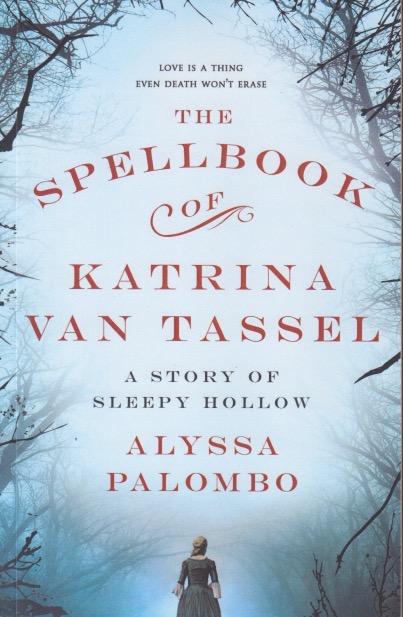
Once a story is released, and its copyright expired, it’s free to be re-interpreted. Although there are those that deny it, any reading is a form of interpretation. I’ve been gathering information on Washington Irving’s “Legend of Sleepy Hollow” for some time now, and I’ve just finished reading Alyssa Palumbo’s The Spellbook of Katrina Van Tassel: A Story of Sleepy Hollow. This novel is a feminist retelling from the point of view of the titular Katrina. In the original she’s an under-developed character. These days we’d say that Irving didn’t write women well. In fact, she functions largely as an object in the story, the source of tension between Brom Bones and Ichabod Crane. Palombo spins a tale from Katrina’s perspective on all this, and thus takes the story in some new directions.
The novel itself reads like a romance, overall. Katrina really does fall in love with Ichabod, but Brom is unable to let go, and the rivalry becomes deadly. As the title also implies, Katrina learns witchcraft as the yarn spins out. From a cultural point of view, this telling is clearly influenced by both the Tim Burton film Sleepy Hollow and the Fox Television series by the same name. Both of them give us the witchery and the idea that Crane would be a romantic catch. In Irving’s vision, it’s difficult to see Crane as any kind of love interest, but the essence of creative retelling is to make the story fit a different mold. Katrina’s story is seconded by that of her friend Charlotte Jansen, who, like Katrina, practices white magic. The witchcraft here isn’t malevolent. Indeed, it is one of the few ways of expressing female power in this time frame.
A good deal of the tale revolves around solving the mystery of what happened to Ichabod on that fateful Halloween when he asked for Katrina’s hand in marriage. Sadly, writers have, historically, tended primarily to be only male. There have been exceptions, even from the very beginning. The first named writer in history was a woman—Enheduanna—but the circumstances of women’s lives, particularly after the agricultural revolution, came to be relegated to roles where the leisure time for writing, and even the opportunity for education to learn it, were rare. Early on the modern novel was dominated by female writers. More recently re-envisioned Sleepy Hollow tales have brought women’s role to the fore, and have taken the narrative in unexpected directions. This feminist retelling of the classic story demonstrates what could have been, had Katrina received a bit more attention, not just as an object. This is a lesson still to be learned.
